Starting Position In Olympic Lifting
Author:
Reviewed by:
(21 years of Oly Lifting experience)
Unlock your full potential by engaging with our experts and community! Have questions about your fitness journey or looking for expert advice on weightlifting techniques? Don’t hesitate — leave a comment below and Sergii Putsov will provide a personalized answer and insights to help you reach your goals.
Torokhtiy is reader-supported. Some links are affiliate links, and we may earn a commission at no extra cost to you. See our disclosure page for details.
The starting position in Olympic lifts holds immense importance as it shapes snatch and clean and optimizes an athlete’s physical capabilities. Coaches emphasize that it impacts the barbell path, effort exerted, muscle engagement, barbell movement, and the overall technical performance. Small errors at the start can have significant repercussions throughout the lift, highlighting the criticality of selecting the correct starting position.
Selecting the correct starting position in Olympic lifting is vital for successful lifts. It promotes optimal force transfer, balance, efficient bar path and technique. Avoiding mistakes like rounded back, incorrect foot placement, improper grip width, wrong shoulder, hip and knee position is essential for a successful lift.
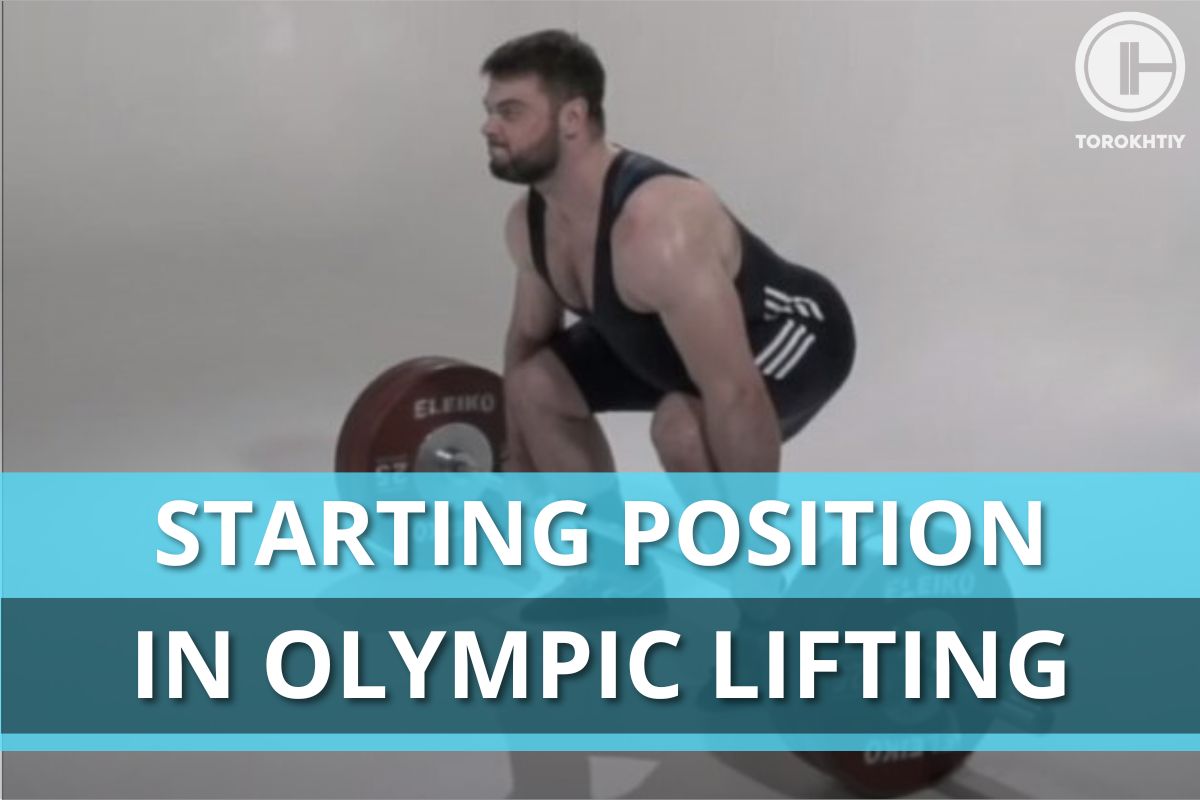
What Is The Starting Position In Olympic Weightlifting?
In Olympic weightlifting, the starting position is known as the setup or the starting stance. The setup is crucial as it establishes the foundation for a successful lift. The different weight lifting positions plays a critical role in optimizing movement mechanics. It encompasses various aspects that contribute to efficient and powerful execution.
The feet should be positioned hip-width apart, allowing for a stable base of support. Placing the feet directly under the barbell ensures optimal force transfer and balance throughout the lift. There are some differences between the snatch and C&J, we will discuss it a bit later. The grip on the barbell is typically wide in the snatch and slightly narrower in the clean and jerk. The width allows for a secure hold on the bar while accommodating the specific demands of each lift. A straight back, with the chest up and a neutral spine, is crucial for maintaining proper posture and reducing the risk of injury. This alignment optimizes force transmission from the lower body to the barbell.
The shoulders should be slightly ahead of the barbell in the starting position. This positioning allows for a more efficient transfer of force and facilitates a smooth bar path during the lift. There are also some peculiarities in both snatch and C&J. Maintaining an even distribution of weight across both feet ensures balance and stability. This balance is essential for generating explosive power and maintaining control throughout the lift.
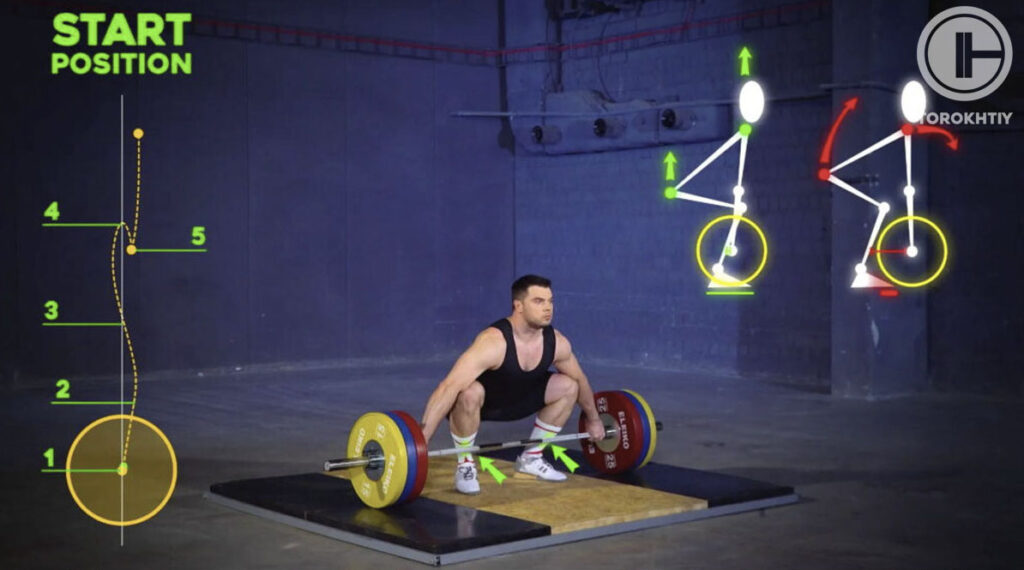
The starting position sets the stage for the subsequent phases of the lifts, such as the first pull, second pull, and receiving positions. Proper alignment and mechanics at the start enhance the efficiency of these subsequent movements, leading to greater force production and the ability to lift heavier weights.
Additionally, a consistent and well-executed starting position aids in developing motor patterns, muscle memory, and overall technique. Athletes who consistently adhere to a proper starting position enhance their ability to execute the lifts with precision, speed, and power.
Why It Is Important To Perform The Starting Position Correctly
Performing the starting position correctly in Olympic weightlifting is vital for several reasons. Here are five key detailed tips highlighting the importance of executing the starting position accurately:
1. Optimal Force Transfer
A correct starting position ensures efficient force transfer from the lifter’s body to the barbell. When the body is aligned properly, force can be transmitted more effectively. This allows for a stronger and more explosive lift.
2. Balance and Stability
The starting position establishes a stable base of support. Maintaining proper foot placement and weight distribution across both feet enhances balance and stability. This stability is crucial for generating maximum power and minimizing the risk of stumbling or losing control during the lift.
3. Injury Prevention
A correct starting position helps to reduce the risk of injuries. Proper alignment, such as a straight back and neutral spine, promotes spinal integrity and minimizes the strain on the lower back. Additionally, balanced weight distribution and controlled foot positioning enhance joint stability, reducing the chances of ankle or knee injuries.
4. Bar Path Efficiency
The starting position influences the bar path throughout the lift. When the shoulders are slightly ahead of the barbell at the start, it allows for a smoother and more efficient bar trajectory. This helps to minimize unnecessary horizontal movement and facilitates a more vertical bar path, optimizing the transfer of force and increasing the likelihood of a successful lift.
5. Power Generation
By establishing an appropriate starting position, the lifter can engage the optimal muscle groups and generate more power. A correct hip and knee position, activates the posterior chain, including the glutes and hamstrings. This engagement of powerful muscle groups enables a stronger extension and greater force production during the lift.
6. Consistent Technique
Practicing and mastering the correct starting position promotes consistent technique. When the starting position is executed consistently, it becomes ingrained in the lifter’s muscle memory. This consistency helps to develop efficient movement patterns, allowing the lifter to perform lifts with greater precision, speed, and accuracy over time.
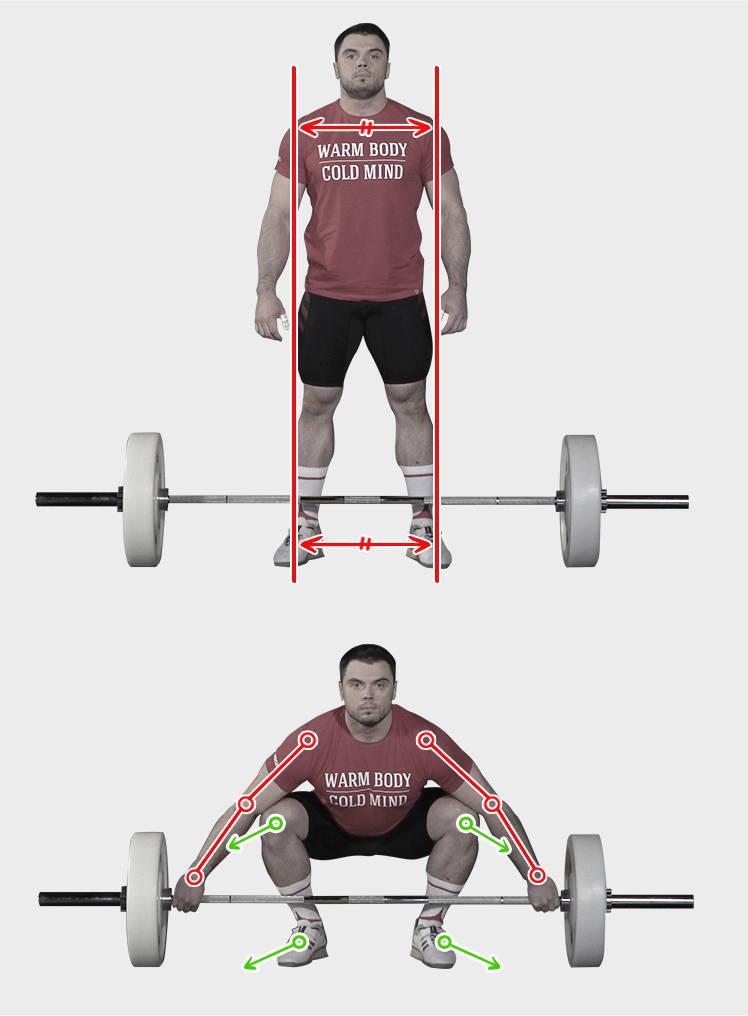
What Is The Snatch Starting Position
The starting position is a crucial aspect of the snatch lift in weightlifting. Here is how to execute it correctly.
Stand with your feet hip-width apart, positioned directly under the barbell. The barbell should be positioned over the balls of your feet. Grip the barbell with a wide snatch grip. Your hands should be pronated (overhand grip) with the palms facing downward. Maintain a straight back with the chest up and a neutral spine. Avoid rounding or excessive arching of the back. The shoulders should be over the barbell, allowing for a more efficient transfer of force and facilitating a smooth bar path. By the way shoulder positioning is one of the main differences in snatch vs clean starting position.
Not let’s take a look on the Common Mistakes:
1. Poor Back Form
Maintaining a straight back is crucial in the snatch starting position. Allowing the back to round can lead to compromised spinal alignment, increasing the risk of injury. Focus on engaging your core muscles and keeping a neutral spine throughout the lift. Imagine elongating your spine and lifting your chest to promote proper posture.
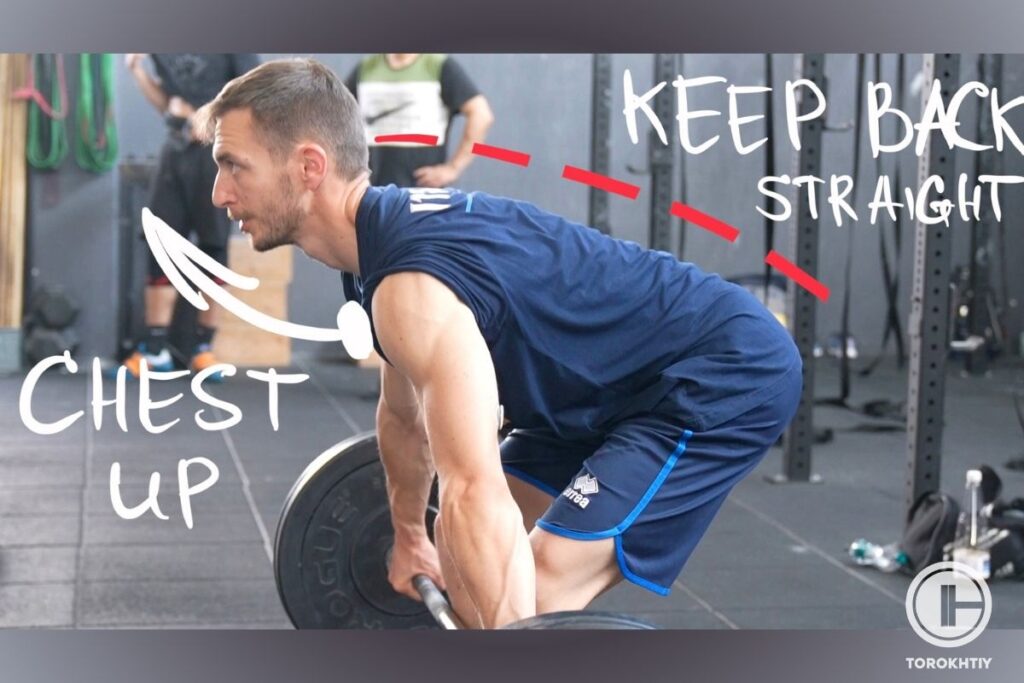
2. Wrong Feet Placement & Balance
Proper foot positioning is essential for balance and stability in the snatch starting position. Placing your feet too wide or too narrow can compromise your stability and hinder force transfer. Ensure your feet are positioned hip-width apart, allowing for a strong base of support. Aim to distribute your weight evenly across both feet.
3. Grip Width
Grip width plays a significant role in the snatch, affecting your ability to generate power and control. Gripping the barbell too wide or too narrow can limit your leverage and compromise your ability to maintain proper bar path and stability and generate force in power position.
4. Not Covering the Bar
Positioning your shoulders correctly ahead of the barbell is crucial for a smooth transition from the first pull to the second pull. If your shoulders are behind the barbell at the start, it can make it challenging to generate upward momentum and hinder the efficiency of the lift. Aim to position your shoulders over the barbell, creating a slight forward lean.
Follow us!

Free!
Get a 2-week Weightlifting Program as a bonus for the subscription to kickstart your training plan!

Free!
What Is The Clean Starting Position
The clean starting position refers to the setup position before initiating the clean and jerk lift in Olympic weightlifting. First let`t talk about the main points in the Clean and power clean starting position.
Stand with your feet hip-width apart, positioned directly under the barbell. The barbell should be positioned over the mid foot. Grip the barbell with an overhand grip, slightly wider than shoulder-width apart. Your hands should be outside your hips, with the palms facing downward. To find your optimal clean grip, you can place the bar on your front rack position, so your wrists must be comfortable beside your shoulders.
Maintain a straight back with the chest up, shoulders back, and a neutral spine. Avoid rounding or excessive arching of the back. Your hips should be higher than your knees, and your shins should be almost vertical. This positioning allows for optimal engagement of the posterior chain.
Common Mistakes to Avoid in the Clean Start Position:
1. Rounded Back
Allowing the back to round or excessively arch during the starting position can compromise spinal integrity and increase the risk of injury. Maintain a neutral spine and engage the core muscles to support the back.
2. Incorrect Foot Placement
Placing the feet too wide or too narrow can affect balance and stability. Ensure the feet are positioned hip-width apart for a strong base of support and proper weight distribution. Keep in mind that experienced athletes can have individual stances as well.
3. Grip Width
Gripping the barbell either too wide or too narrow can impact your ability to generate power, control during the lift and have a safe front rack catch position. Find a grip width that allows for a comfortable and secure hold while optimizing force transmission.
4. Improper Shoulder Position
Failing to position the shoulders slightly ahead of the barbell can hinder the transition from the first pull to the second pull. Proper shoulder positioning allows for an efficient bar path and optimal force transfer.
5. Inadequate Hip and Knee Position
If the hips are too low or too high, or if the knees are not in line with the toes, it can negatively affect power generation and the ability to transition smoothly into the second pull. Focus on achieving the correct hip and knee positioning to maximize force production.
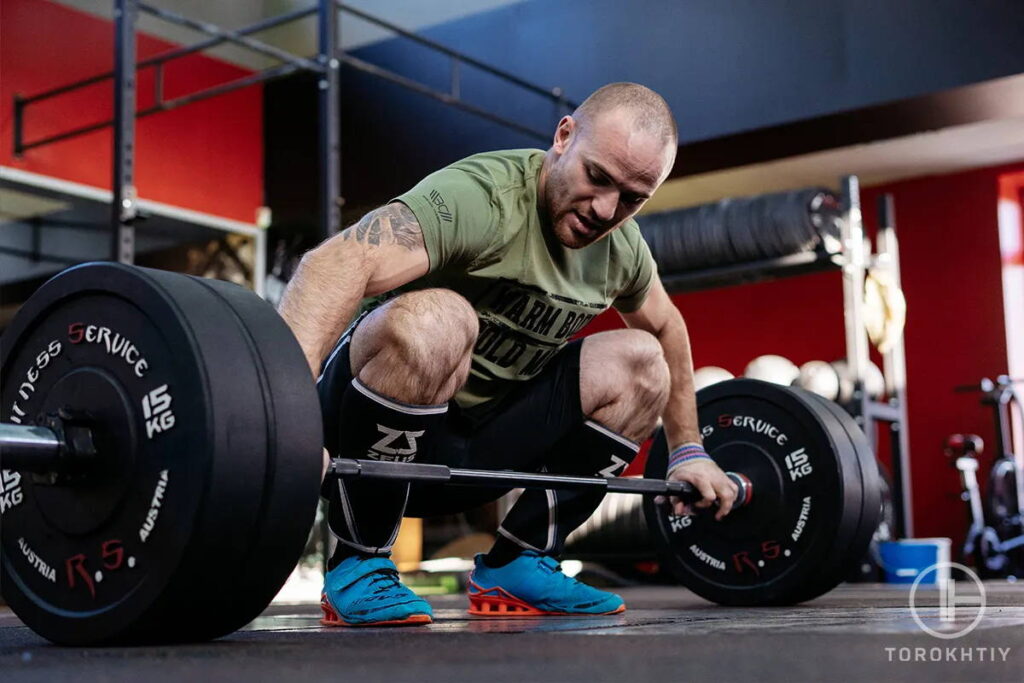
FAQ
What Is The Hierarchy Of Olympic Lifts?
The hierarchy of Olympic lifts refers to the order of performance in weightlifting competitions. The snatch, where the barbell is lifted from the floor to overhead in one motion, takes precedence. It is followed by the clean and jerk, involving lifting the barbell from the floor to the shoulders and then driving it overhead. The snatch is historically performed first due to its technical complexity and the clean and jerk follows suit.
What Is The Correct Starting Position?
The correct starting position in Olympic weightlifting involves standing with feet hip-width apart, the barbell positioned over the balls of the feet or mid foot. The grip on the barbell should be wide for the snatch and slightly wider than shoulder width for the clean and jerk. The back should be straight, chest up, shoulders cover the barbell, and hips higher than knees. Weight should be evenly distributed across both feet for balance and stability.
Conclusion
In conclusion, the starting position in Olympic weightlifting plays a pivotal role in maximizing performance and reducing the risk of injury. Whether it’s the snatch or clean, attention to detail is crucial.
Feel free to share your thoughts, ask questions, or provide additional insights in the comments below!
Also read:
Why Trust Us?
With over 20 years in Olympic weightlifting, strength training, nutrition coaching, and general fitness our team does its best to provide the audience with ultimate support and meet the needs and requirements of advanced athletes and professional lifters, as well as people who strive to open new opportunities and develop their physical capabilities with us.
By trusting the recommendations of our certified experts in coaching, nutrition, and sports training programming, as well as scientific consultants, and physiotherapists, we provide you with thorough, well-considered, and scientifically proven content. All the information given in the articles concerning workout programming, separate exercises, and athletic performance, in general, is based on verified data.
The product testing process is described in more detail here.
Author: Sergii Putsov
Head of Sport Science, PhD
Best Results: Snatch – 165 kg,
C&J – 200 kg
Sergii Putsov, Ph.D., is a former professional weightlifter and National team member, achieving multiple medals in the 94 kg weight category at national competitions. With a Master’s degree in “Olympic & Professional Sport Training” and a Sport Science Ph.D. from the International Olympic Academy, Greece, Sergii now leads as the Head of Sport Science. He specializes in designing training programs, writing insightful blog articles, providing live commentary at international weightlifting events, and conducting educational seminars worldwide alongside Olympic weightlifting expert Oleksiy Torokhtiy.
Reviewed by: Oleksiy Torokhtiy
Olympic Weightlifting Champion, PhD in Sport Science
Best Results: Snatch – 200 kg,
C&J – 240 kg
Oleksiy Torokhtiy is a professional athlete boasting 20 years of experience in Olympic weightlifting. With multiple European and World titles under his belt, he has showcased his prowess in two Olympic Games (Beijing 2008 and London 2012). Upon concluding his illustrious career, Oleksiy dedicated himself to coaching. By 2022, he had conducted over 200 weightlifting seminars worldwide. He is the visionary behind an international sportswear and accessories brand known for its motto, “Warm Body Cold Mind.” Additionally, he is an esteemed author and the creator of a series of training programs and eBooks.




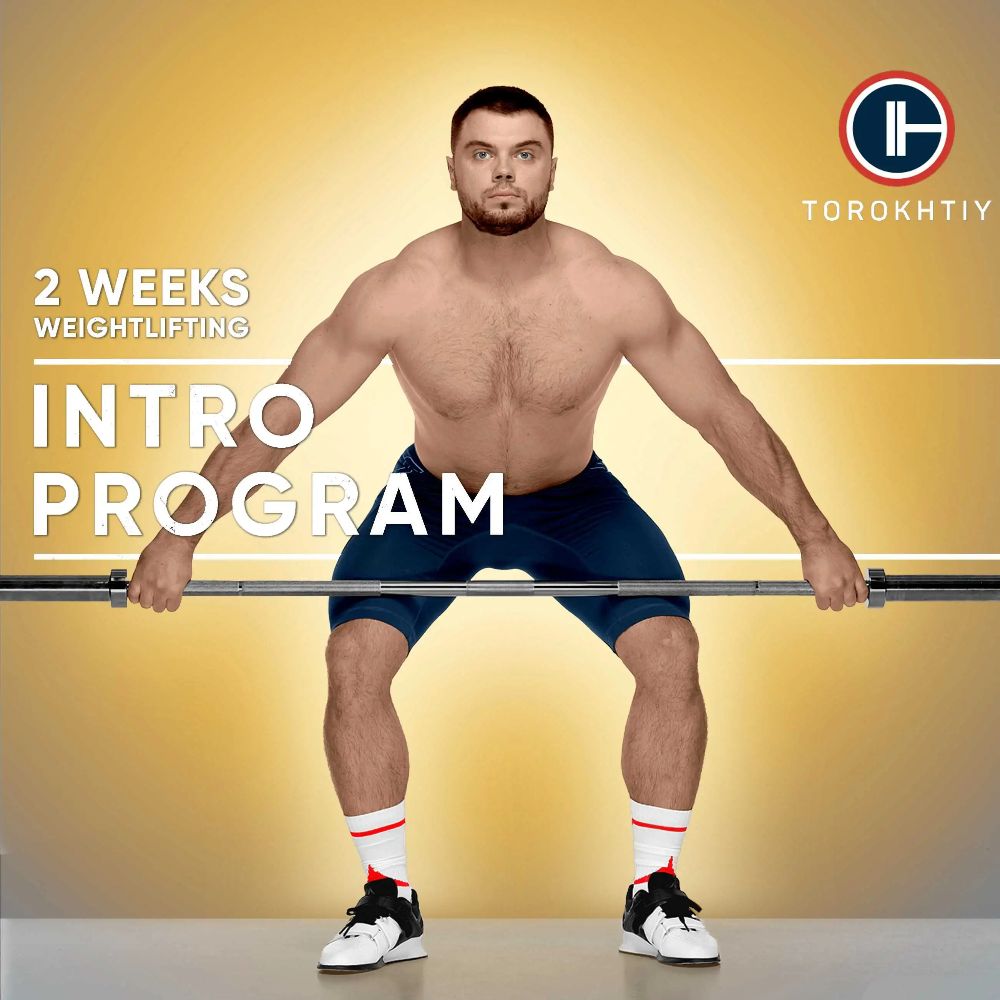
Still have questions after reading our article? Unlock your full potential by engaging with our experts and community! Don’t hesitate — leave a comment below and Sergii Putsov will provide a personalized answer and insights to help you reach your goals.